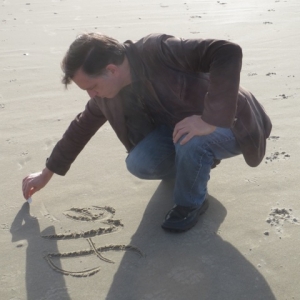- Published on
Q&A with Mark Simonson

I am a type designer, font developer and lettering artist. Of the typefaces I've designed, the most popular at the moment is Proxima Nova.
Hardware
I use a 15" MacBook Pro (retina) with a 27" Apple Thunderbolt Display, an Apple Keyboard with Numeric Keypad (wired) and Apple Magic Mouse (wireless). For sketching ideas I use felt tip pens (Microns lately) and yellow legal pads or graph paper. For working out ideas in more detail, I use pencils and tracing paper. I use an Epson Perfection V700 Photo for scanning. I sometimes listen to audio books or podcasts on an iPhone 5 while I'm working.
Software
For making fonts I use RoboFont, FontLab Studio, Glyphs, MetricsMachine, Superpolator, TTX, BBEdit, TextMate and lots of specialized font-related software. I do some scripting in Python, not as much as I ought to. Mainly when it's glaringly obvious that a particular task will take way too long and be way too boring and error prone to do manually. Photoshop and Illustrator also come in handy, especially for lettering projects and making type samples. For scanning I use VueScan. I use InDesign for proofing fonts and making font specimens and other promo stuff. For writing I tend to use simple text editors like TextEdit or Byword. For the occasional spreadsheet (sales tracking, dealing with font data) I use Numbers or Excel.
Dream
I wish I could make a font just by imagining it. It's exciting to come up with an idea, but a lot of tedious work to make a whole font, especially a whole family of fonts. Sometimes you get bored with the idea long before it's finished and wonder if it's really worth doing. That said, it's way easier to make a font than it used to be. I expect this trend will continue, but it'll probably always be more work than I wish it was.
I wish I could make a font just by imagining it
Inspiration
For as long as I can remember I've been fascinated by the shapes of letters–the endless variations and possibilities of these seemingly simple forms. How far can you take them while still keeping them acceptable and legible to readers? How can you make something new that's not so different that it distracts the reader? Does a particular idea work for a whole alphabet, or just the lowercase or uppercase? Does it work as well with other scripts, such as Greek or Cyrillic? Type design is as much about the limitations as it is about the possibilities. It's that tension that inspires me.
For as long as I can remember I've been fascinated by the shapes of letters–the endless variations and possibilities of these seemingly simple forms